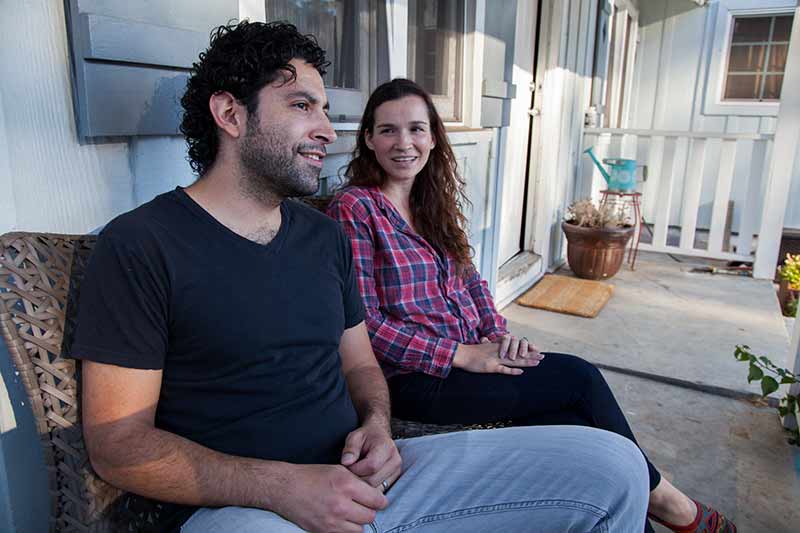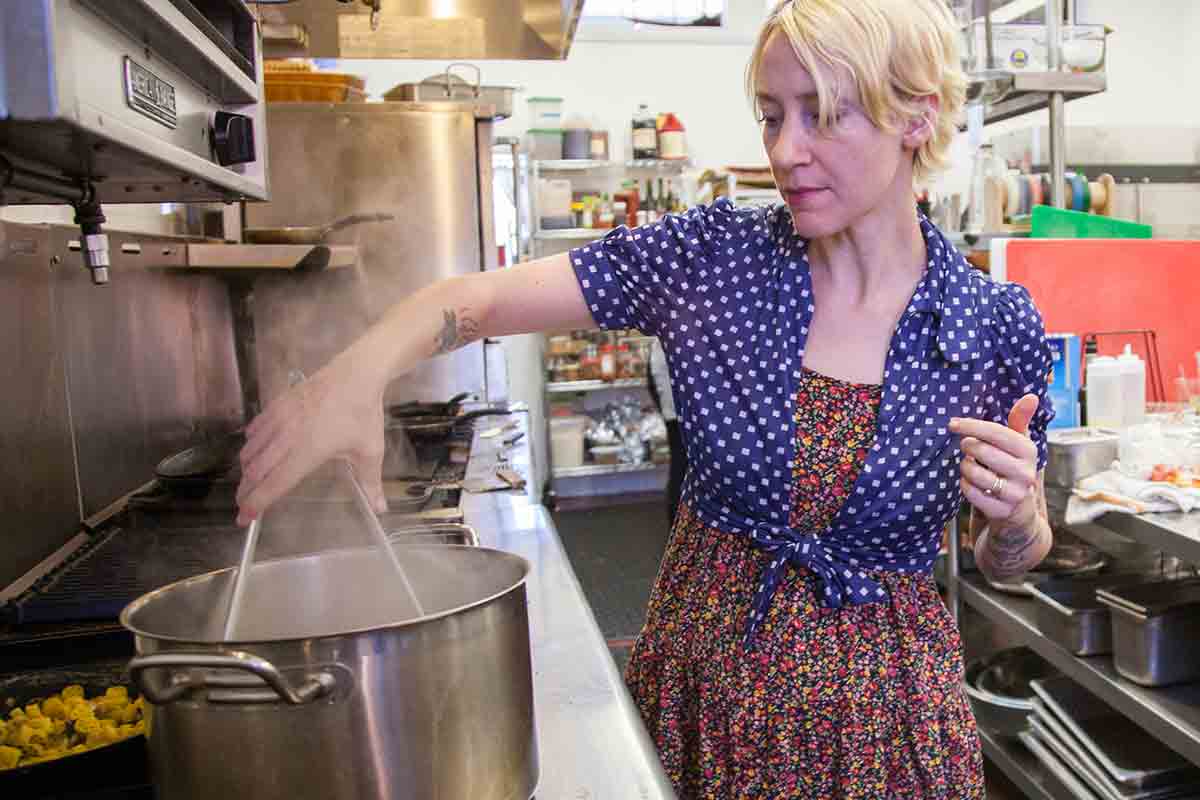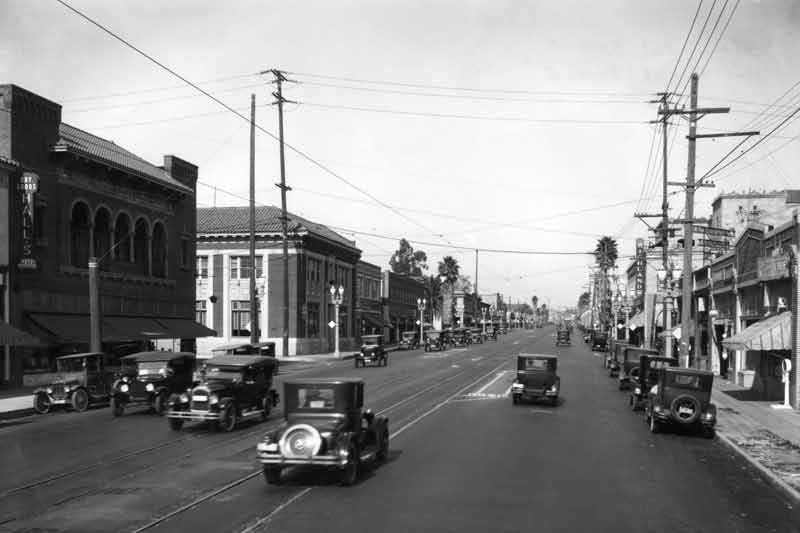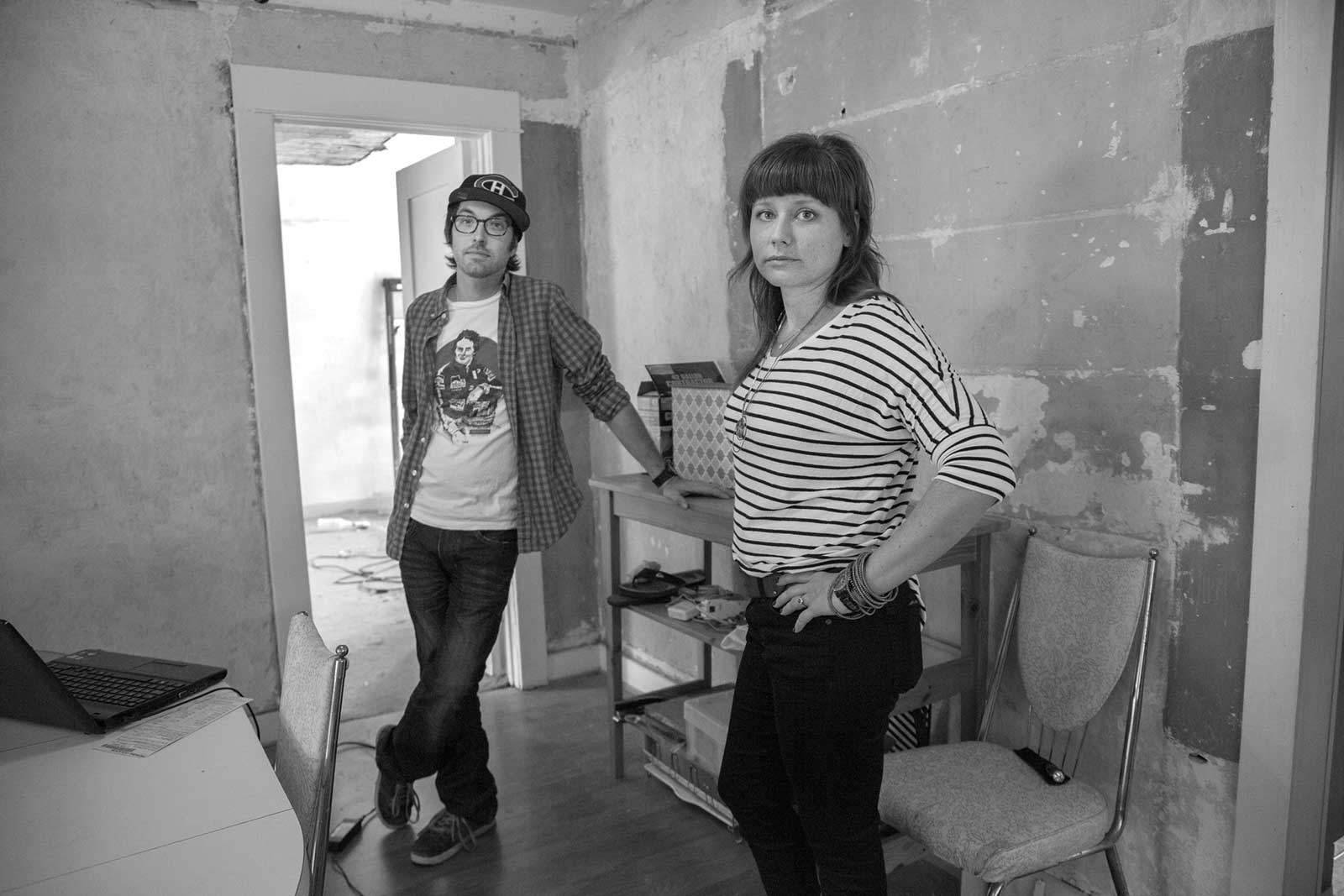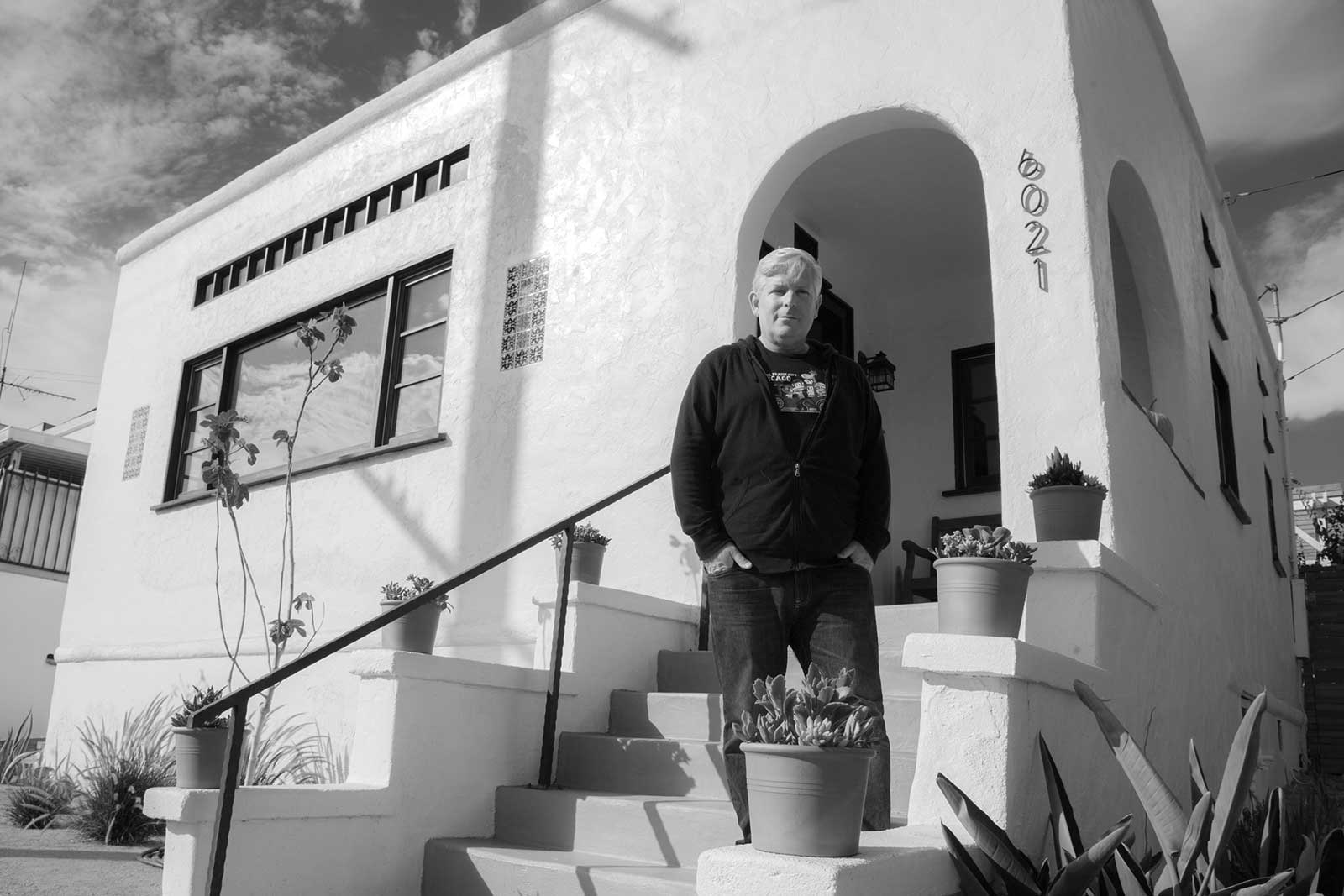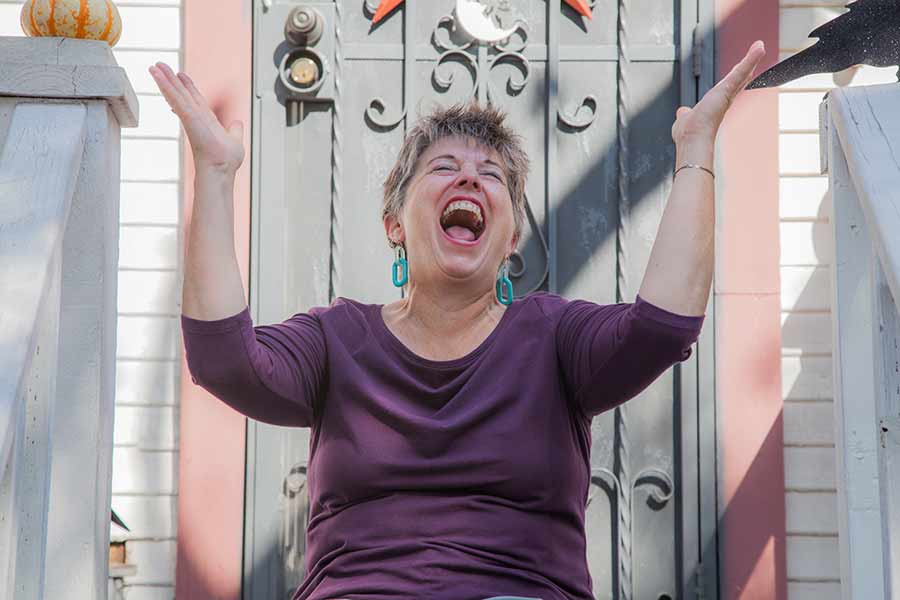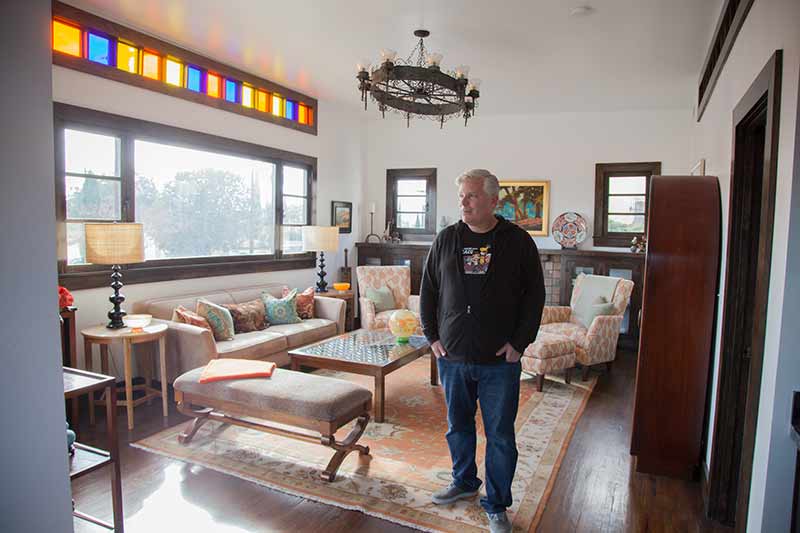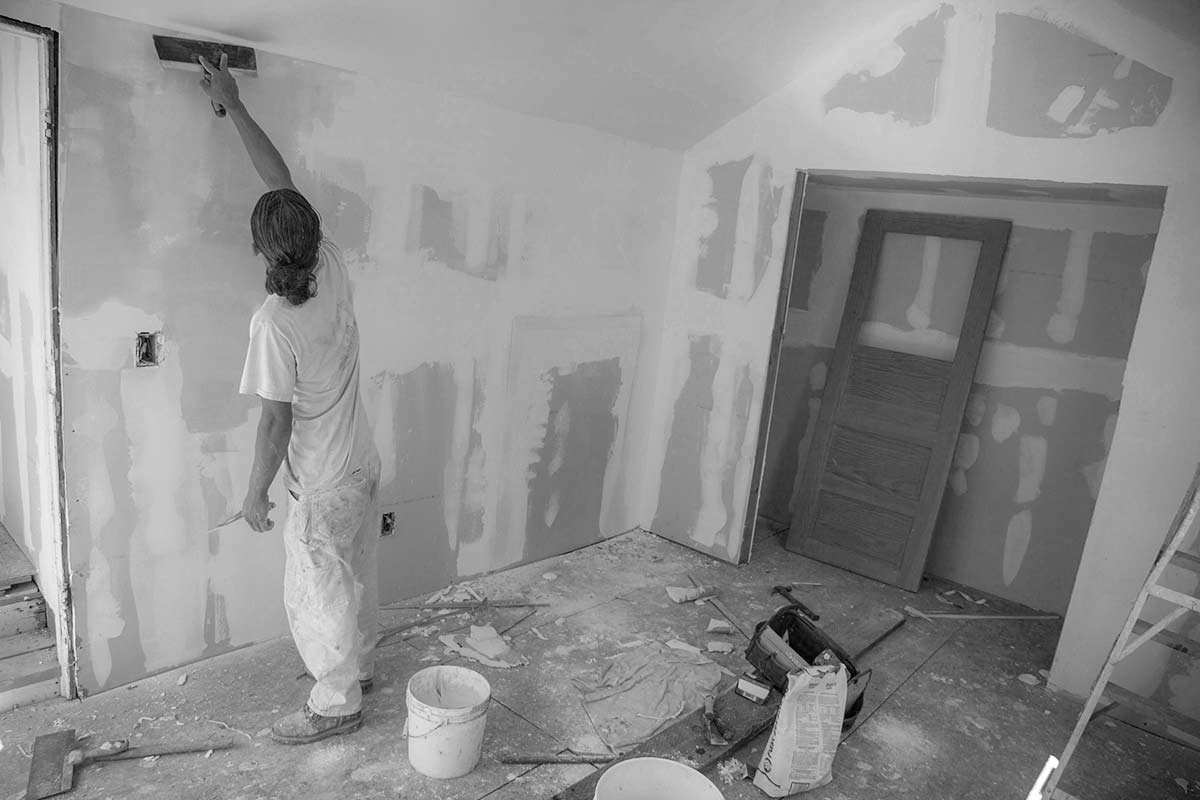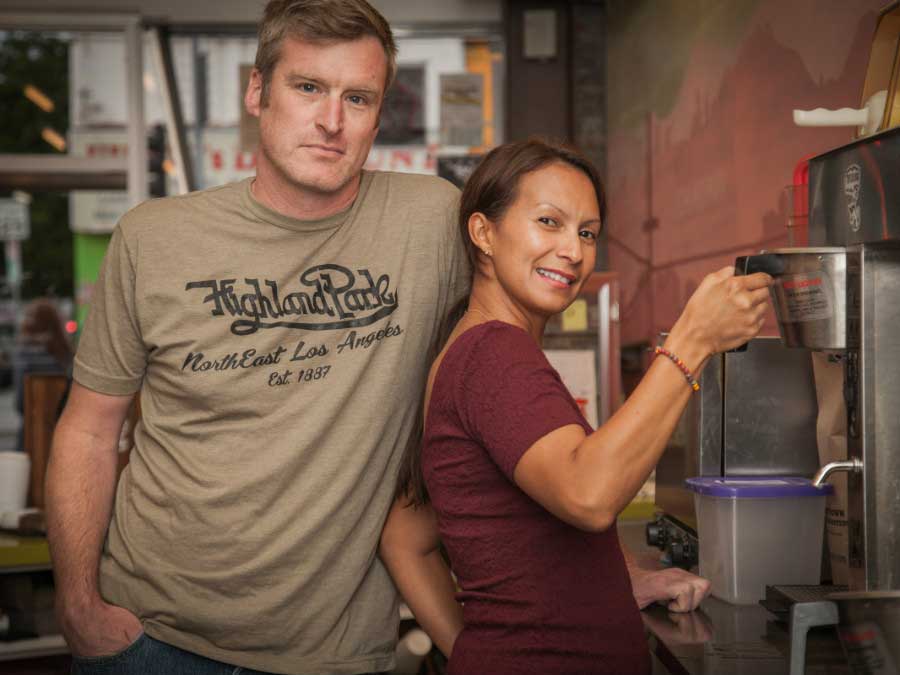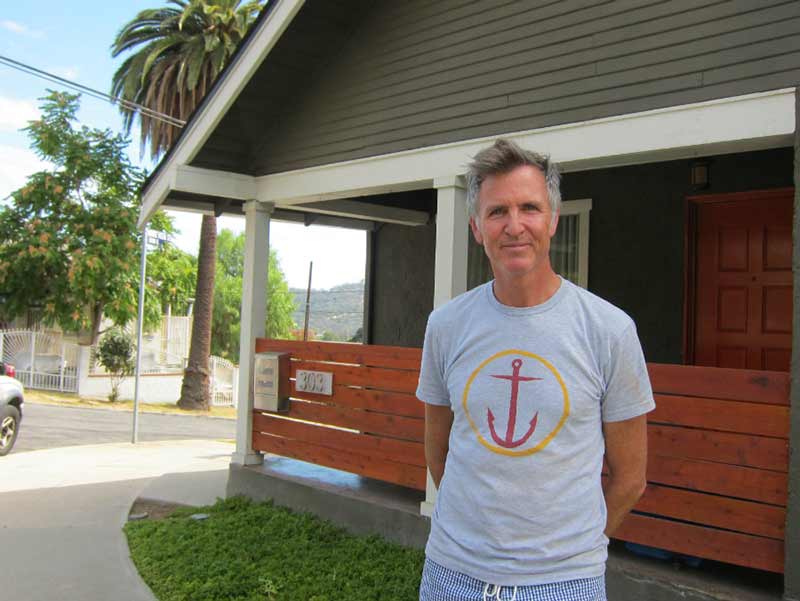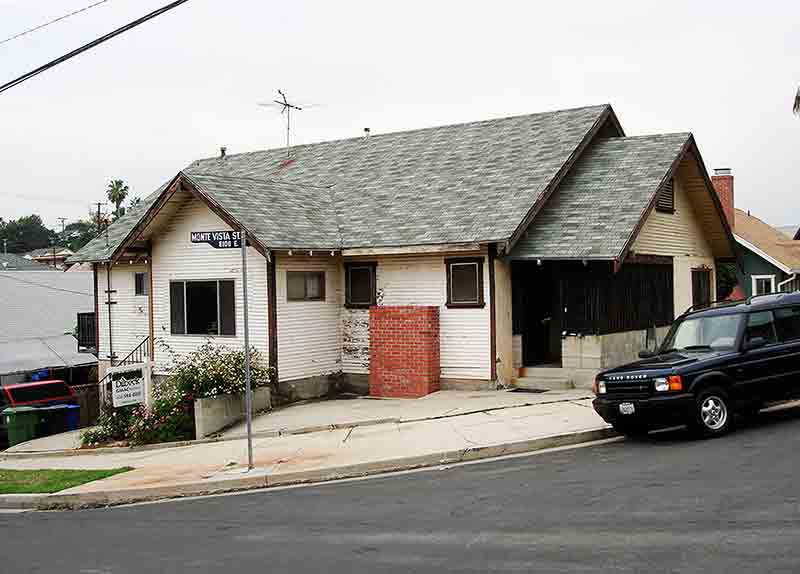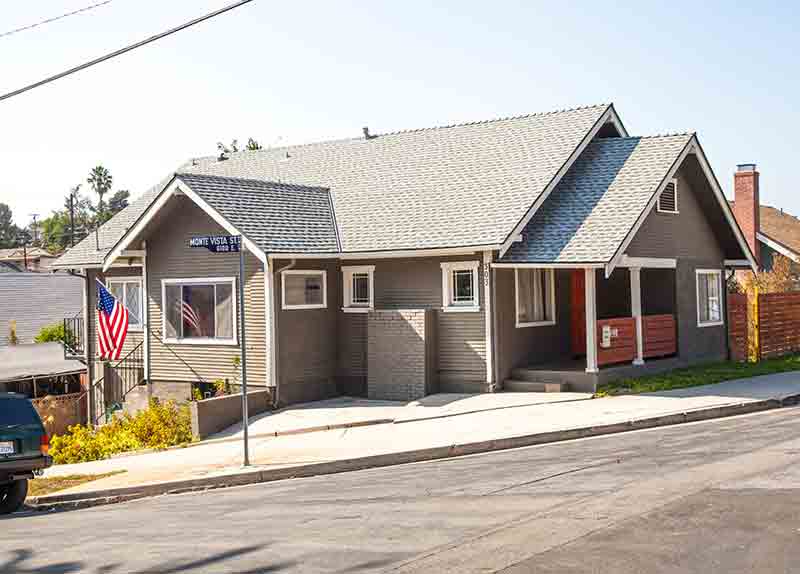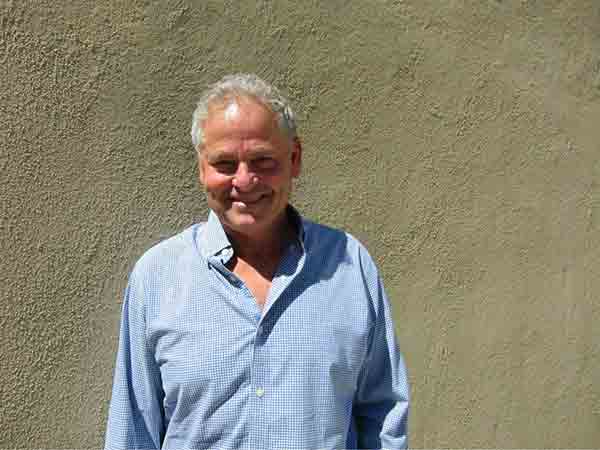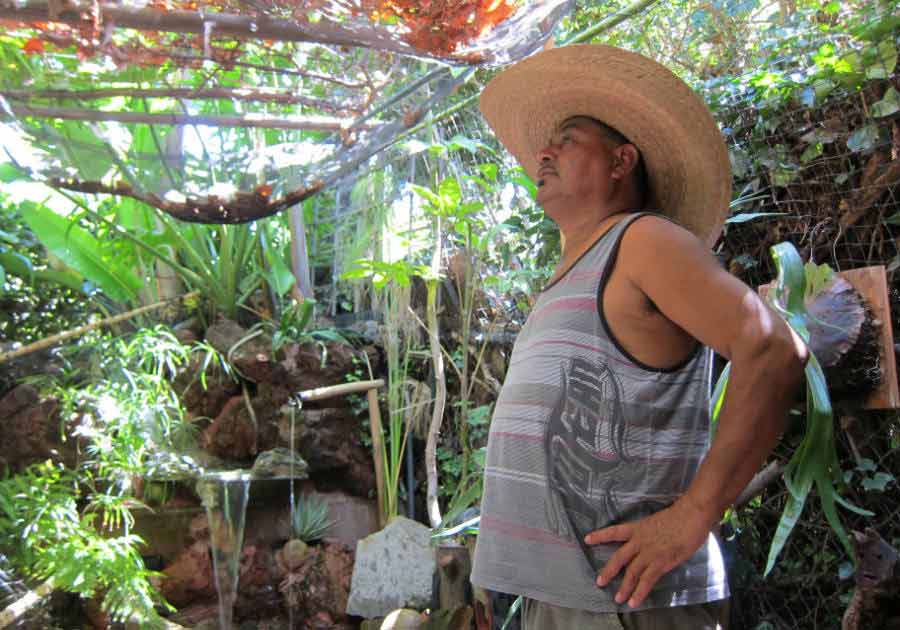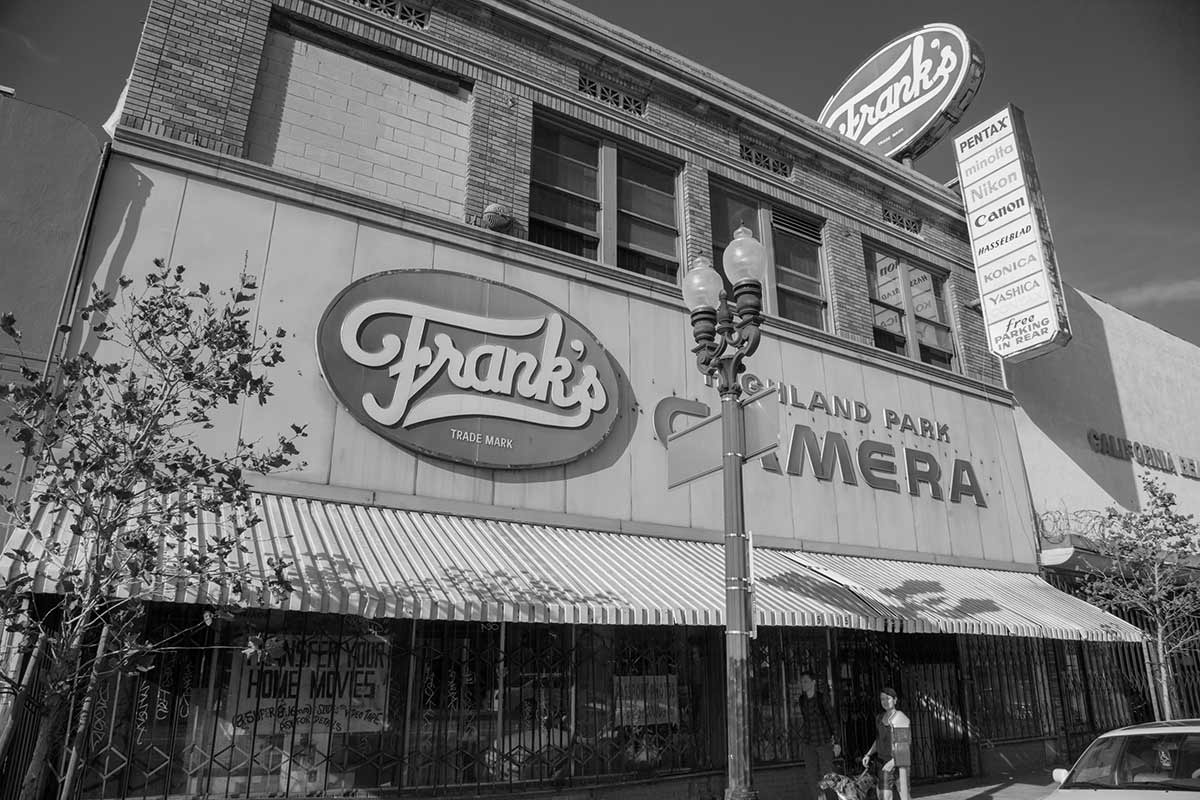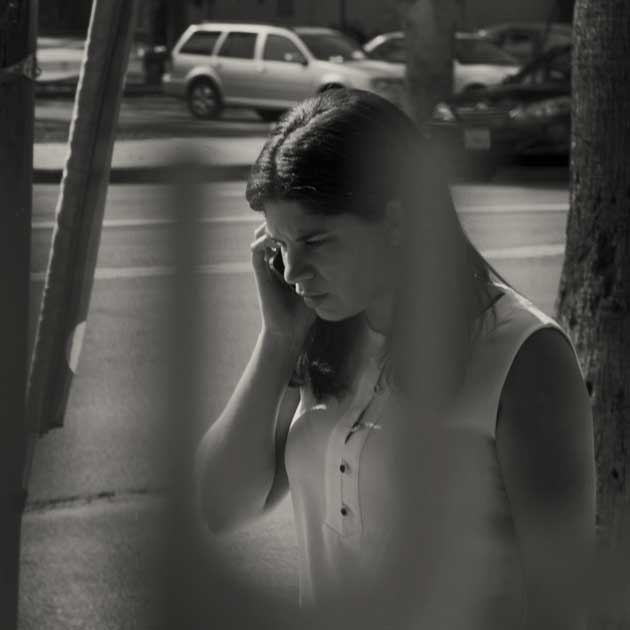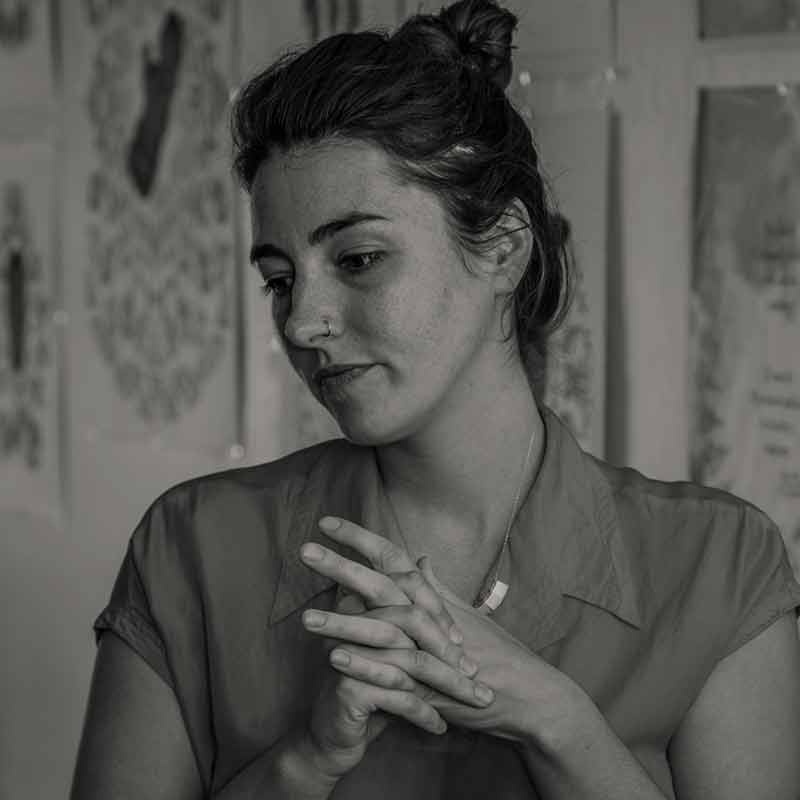In all the years since, he’d taken no vacations, no sick days, no days off for anniversaries or birthdays. His motto: “If it’s raining you come to work. If it’s sunny you come to work. If it’s cold you come to work. If it’s windy you come to work. No matter how it is, you always come to work.”
That is, until the day you don’t.
In early November, Frank packed up his remaining merchandise, put it in storage and went out of business. There were many things that lead up to this day. Lots of his usual customers, mostly working-class Latinos, had moved away in recent years or just weren’t buying stuff like they used to. The last straw was when he got a call saying the building his store was in had just been sold and was going to be renovated – and that after two decades of never going up, his rent was about to increase “significantly.” Before he even heard how much, Frank decided it was time to go.
On one hand, closing the store feels like a relief, Frank said. On the other, “it feels like crying.” He thought for a moment. “But what can we do? Everything changes you know. Nothing stays the same.”
Everything changes. It is a phrase you hear a lot these days on Figueroa Street, where small businesses like Frank’s have been shutting down one after another. But the thing that becomes clear the more you speak to people at the center of the kind of change going on in a neighborhood like Highland Park right now is that it doesn’t just happen. It takes hard work by a network of people who hope to make a lot of money making this place change. People we’d like to introduce you to.
The ‘Retenanter’
“See this swap meet here?” asked Nicole Deflorian, pointing at an old brick building with a sign – HighlandSwapMall.Com – neatly spray-painted over the door. It’s a few doors down from Frank’s now-shuttered store.
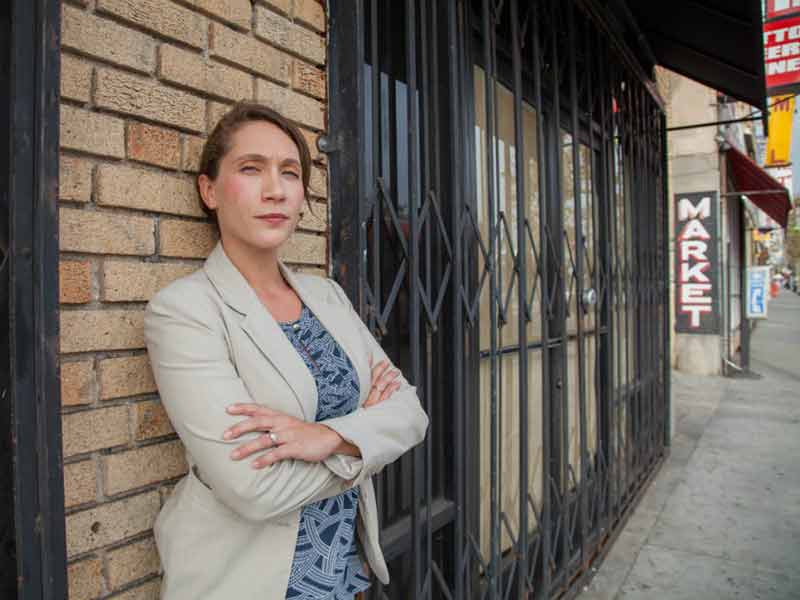
Nicole Deflorian is a commercial real estate agent. (Photo credit: Rafael Cardenas)
She looked through the Swap Mall’s windows at a hodgepodge of kiosks selling underwear, cell phones, cheap jewelry. “I don’t know how they are still around and staying in business,” she said.
Nicole is a commercial real estate agent with Clint Lukens Realty and one of the many commercial agents who has marked Highland Park as her new territory in the last several months. She now spends considerable time in this neighborhood, staking out old buildings like the Swap Mall and old stores like Frank’s.
“This could be broken up into two or three cute boutiques,” she said, sizing up the Swap Mall building. “That’s probably going to happen soon.”
One of Nicole’s specialties is something called “retenanting.” Maybe you’ve never heard this word, but in commercial real estate it is a term of art, an actual job: find commercial buildings with low-rent tenants occupying storefronts, ideally on month-to-month leases, then “kick them out, retenant the property with new tenants at market rate,” Nicole explained.
Nicole admits this can sound predatory. “I do feel bad,” she said. “But it is a business. And when these people are paying under-market rents, and we have a client that owns the property, we have to look out for our client’s best interest.”
Actually finding those clients, the landlords she hopes to pitch her retenanting services to, can be difficult. Property owners are notoriously hard to reach, their identities obscured in property records by the company names under which they frequently operate. And it’s not like you can just go into a building and ask the current tenants how to reach their landlord. Often, they don’t want to tell you.
Nicole has developed a strategy for this.
“What I typically do is I go in, I see a store that’s like an old appliance store that’s not going to last for another year or so,” she explained. “So I try to figure out how to get in touch with the owner – like say that I got hit in the back parking lot and I need to call insurance, so I need the property owner’s information.”
It’s a trick Nicole learned from another commercial real estate agent years ago, she said. “Sometimes you have to get creative and kind of do whatever it takes get the information.”
Once Nicole obtains a property owner’s information, her pitch is pretty simple. She asks how much rent current tenants pay. In a long-disinvested neighborhood like Highland Park, it’s usually quite low. “Like $1.25 a square foot or something ridiculous,” she explained. At that point, she’ll say to the owner: “Well look, I have spaces across the street that I’m leasing for $2.50 a square foot. How does that sound?”
If all goes as planned, she said, out goes the old appliance shop, and in comes “a cool new fitness studio, or whatever.” And Nicole makes a nice commission.
The ‘Gentrification Industrial Complex’
A retenanter like Nicole is just one player in what could be called the “Gentrification Industrial Complex,” a web of real estate leasing agents, listing agents, landlords and investors whose business models are built on stoking and profiting from neighborhood change.
This change often starts as just a trickle – new people priced out of other, wealthier neighborhoods move in to a neighborhood they can better afford, maybe one with a cute coffee shop they like. But the gentrification industrial complex turns that trickle into a flood, flipping homes to lure more people, who drive up home prices. Then those high home prices catch the attention of commercial real estate interests.
“Retail follows residential,” is an aphorism in the commercial real estate world. Patrick Dilanian, a commercial real estate agent with RE/MAX who has been focusing on Highland Park, explained it this way: “These guys coming in here spending $500,000 or $600,000 for a home – they want to have shopping. They want to have somewhere to eat, somewhere to drink, somewhere to spend their money.”
Patrick’s specialty brings about larger-scale change than retenanting a commercial building unit by unit. He mainly brokers deals where longtime property owners sell an entire building, usually to a new investor or investor group that plans to renovate and reimagine the space. Patrick recently brokered a $1.5 million deal to sell the building on Figueroa Street that housed Frank’s discount store. The owners of an upscale coffee outfit have already signed a lease for one of the units.
Patrick also handled the sale of the building next door to Frank’s old place, an old bowling alley and bar that hosted punk rock concerts. The building includes a storefront unit where a family runs a discount sports souvenir shop; they lost their lease. The building, which sold for $2.9 million, is being gutted and restored. It will become a live-music venue/retro bowling alley/restaurant.*
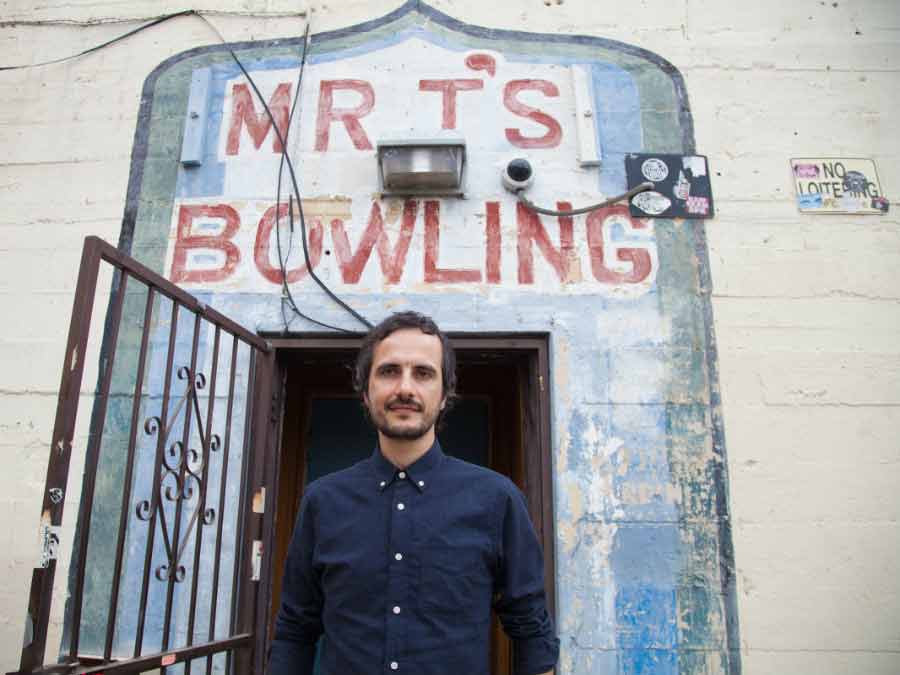
Investor Cyrus Etemad recently bought Mr. T’s Bowling alley and a row of storefronts on Figueroa Street. (Photo credit: Rafael Cardenas)
Yet another building is on the market next door, for $3.6 million. It contains the Swap Mall, which has a handful of single-occupancy units on its second story. Patrick is representing the owner.
Of the 20 storefronts on this two-block stretch of Figueroa Street. Patrick figures he has brokered or is brokering the sales of more than half of them, just in the last year.
“I kind of play chess with these buildings here,” he said. “A building at a time. One step at a time. We’ll get it done.”
The New Urban Landlords
Dave Walker and his partners at Engine Real Estate just bought one of the buildings that Patrick Dilanian represented.
“My goal is to build a portfolio and own while this area improves,” Dave said. “Up and down the street, up and down Figueroa.”
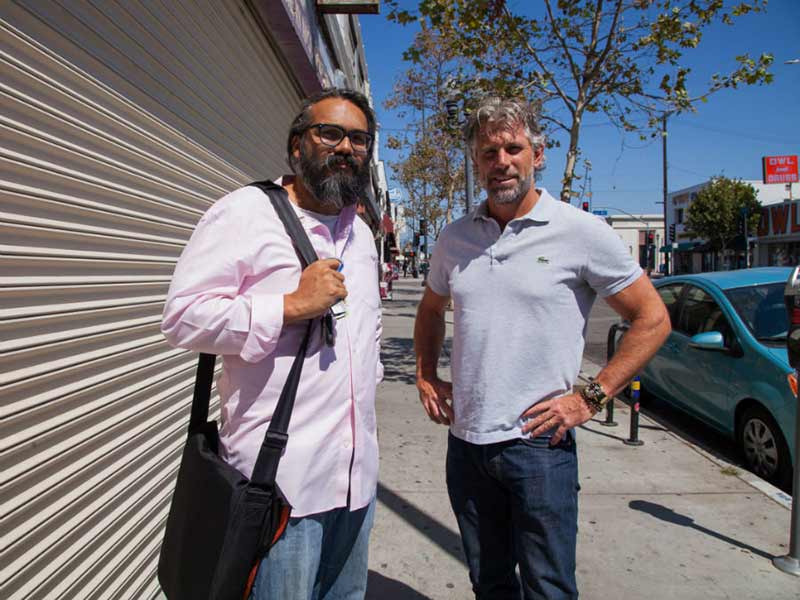
Dave Walker (right) with business partner Jeffrey Birkmeyer. Walker recently bought Frank’s Camera. (Photo credit: Rafael Cardenas)
Dave is a member of another key group in the Gentrification Industrial Complex: Commercial real estate investors.
One interesting thing about Dave and other investors who’ve taken a recent interest in neighborhoods like Highland Park is that, until recently, their portfolios were filled with properties far different than those found here.
Dave has spent most of his career developing “suburban, quasi-urban sprawling shopping centers,” he said. “You know, typically, with big-box retailers and things like that.”
But the suburbs are getting poorer, and the potential for high returns on an investment in a sprawling shopping mall has mostly been tapped out. Meanwhile, back in certain urban neighborhoods, places once considered “disinvested” because investors like Dave avoided them for so long, investment returns have started to soar.
One urban neighborhood Dave recently watched go through the cycle of gentrification is Abbott Kinney, on the west side of Los Angeles across town from Highland Park. Property values there, he said, went “from hundreds of dollars a square foot to multiple thousands of dollars a square foot – right under my nose. And I was very frustrated that I wasn’t participating in it. And I kind of swore that I wasn’t going to let that happen again,” he said.
And then Dave Walker found a cavernous building on Figueroa Street known to locals as Frank’s Camera. It was a giant camera emporium that did business in Highland Park for decades, until its elderly owners, Frank and Vera Vacek, retired a few years ago. With investors, Dave just bought the building for $3.4 million. After rehabilitating it and leasing it out, they hope to see a 25 percent return on their investment.
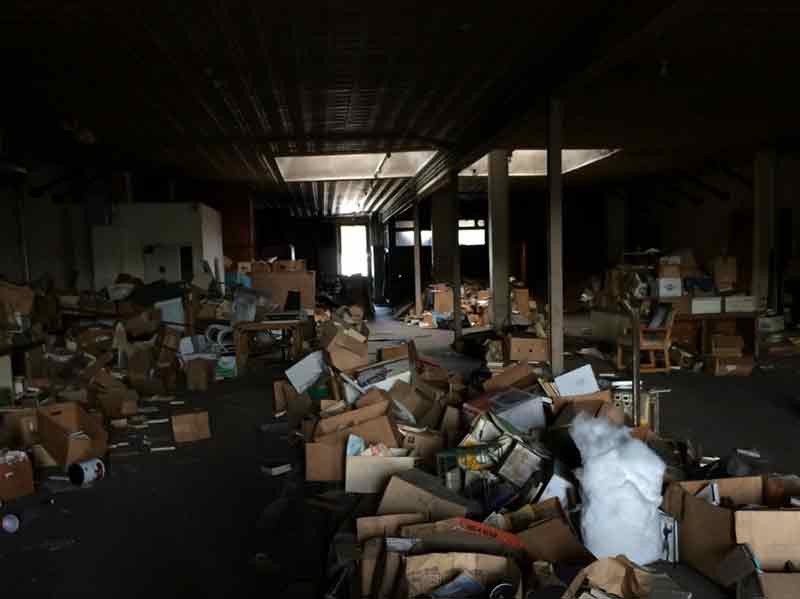
Inside Frank’s Camera, which went out of business in October 2014. (Photo credit: Krissy Clark)
“This does remind me of my grandmother’s basement, just a little bit,” he said when he visited the building in October.
Dave has spent the last few months giving tours of the place. First he had to court potential investors to help him finance the building’s purchase and renovation. He secured a handful of “high net worth” individuals, as they’re called—mostly friends and people he knew from his shopping mall days.
As he woos potential tenants, he tries to prepare them for what they will see.
A team of workers has filled 15 dumpsters with years of the store’s old inventory – three stories piled with old cameras, lenses, film, tripods and other photography paraphernalia. Not to mention the remnants of uninvited visitors to the long-vacant building – broken vodka bottles, small animal cages, blow-up doll sex toys.
But as Dave Walker helps people weave through the detritus, what he wants to focus on are the building’s “good bones.”
“You can see where the plaster has come off the walls,” he told a pair of potential tenants who own several trendy bars and restaurants in Los Angeles. “And you can see what’s cooking. We’ve got exposed brick, laying right behind that.”
“Oooh,” one of the potential tenants said.
“It’s got that intangible which is hard to come by, which is the cool factor,” Dave said.
He took them outside for his final pitch: Sure it looks bad now, but imagine on the top floor, offices for tech start-ups, Dave said. “A little cliché,” he said, “but there’s not a lot of it around. It’s an opportunity.”
And downstairs? “We think bar. Restaurant. We think potential gym,” Dave continued. Maybe the neighborhood would like one of those upscale spinning gyms, he posited. “Soul Cycle? Even though it’s not the right demographic for them – yet.”
Yet.
That little word is the key to the business plans of investors like Dave Walker. To make real money in a neighborhood like Highland Park you need to buy property before the demographics change too much, when prices are still relatively cheap. And then you need to do what you can to make sure the demographics keep changing, so people who can afford to shop at more expensive businesses keep coming, and you can rent to those businesses.
That’s the only way his investors will go in to a place like Highland Park, Dave said. “For a higher-risk neighborhood, that’s kind of what we look for,” he said. “Knowing with some level of certainty that the rents are going to go up – that that $1 rent is going to become the $3 rent or the $4 rent – or the $12 rent.”
And to achieve that ultimate goal, the cheap mom-and-pop shops that cater to people on a budget – the Swap Malls, Frank Cordova’s humble discount variety store – they have to go. Their going-out of business sales are not just unfortunate side-effects of the process. They are the process, in many ways.
Dave is relatively open about this, and about the downsides he sees.
“It’s a slippery slope, because in some instances the neighborhood will lose its local natural flavor,” he said.
But, he also talked about the vibrancy new shops can bring to a neighborhood. He sees what he does as investing in and improving Highland Park.
“And when you’re investing and improving, you just don’t stop,” he said. “There’s no natural stopping point. There’s no airbrake in the middle that says ‘That’s enough profit. That’s a high enough rent. I’ve made enough return on my money, I don’t need to make any more.’ That’s not human nature. That’s not how capitalism works. And that’s the life that we are in.”
And that is the process we are in, in many urban neighborhoods across the country, and across this neighborhood of Highland Park. Just a few miles away from Figueroa Street, investors looking for higher returns have been buying up property along York Boulevard, Highland Park’s other main drag.
Los Angeles-based GPI Companies raises millions from wealthy individuals and pairs it with many more millions from private-equity firms on Wall Street to buy portfolios of properties that – as the company’s website puts it – “offer improving demand fundamentals due to urban re-generation, creative class movement and gentrification.”
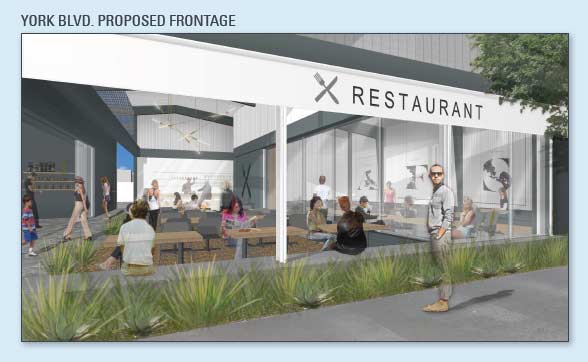
GPI’s vision for York Blvd, as represented in a GPI flier.
“We spend a lot of time thinking about where to deploy capital – about where to buy things and build things,” said Drew Planting, GPI’s founder and managing partner,
A few years ago, Drew happened to drive through Highland Park while he was helping his stepfather buy a new house in another part of Los Angeles. When Drew saw a rundown pet store with a “for sale” sign on the front, right next to a craft-brew pub, he pulled over his car and called his partner, Cliff Goldstein, to tell him about the neighborhood.
“And I said, Cliff, we are all in,” Drew said. “And my 75-year-old stepfather looks at me like, ‘What are you talking about?’”
GPI has since bought the space that housed old pet store, which will soon open as Recess Eatery, specializing in Mediterranean-California cuisine. Down the street, GPI purchased an empty lot that it plans to develop as a retail or restaurant space. That’s two properties in Highland Park so far, and Drew says his company is looking for more.
CORRECTION: The original version of this story misstated plans for the bowling alley. It will be a live-music venue, bowling alley and restaurant. In addition, it incorrectly described the situation of the sports souvenir shop. It lost its lease. The article has been corrected.

